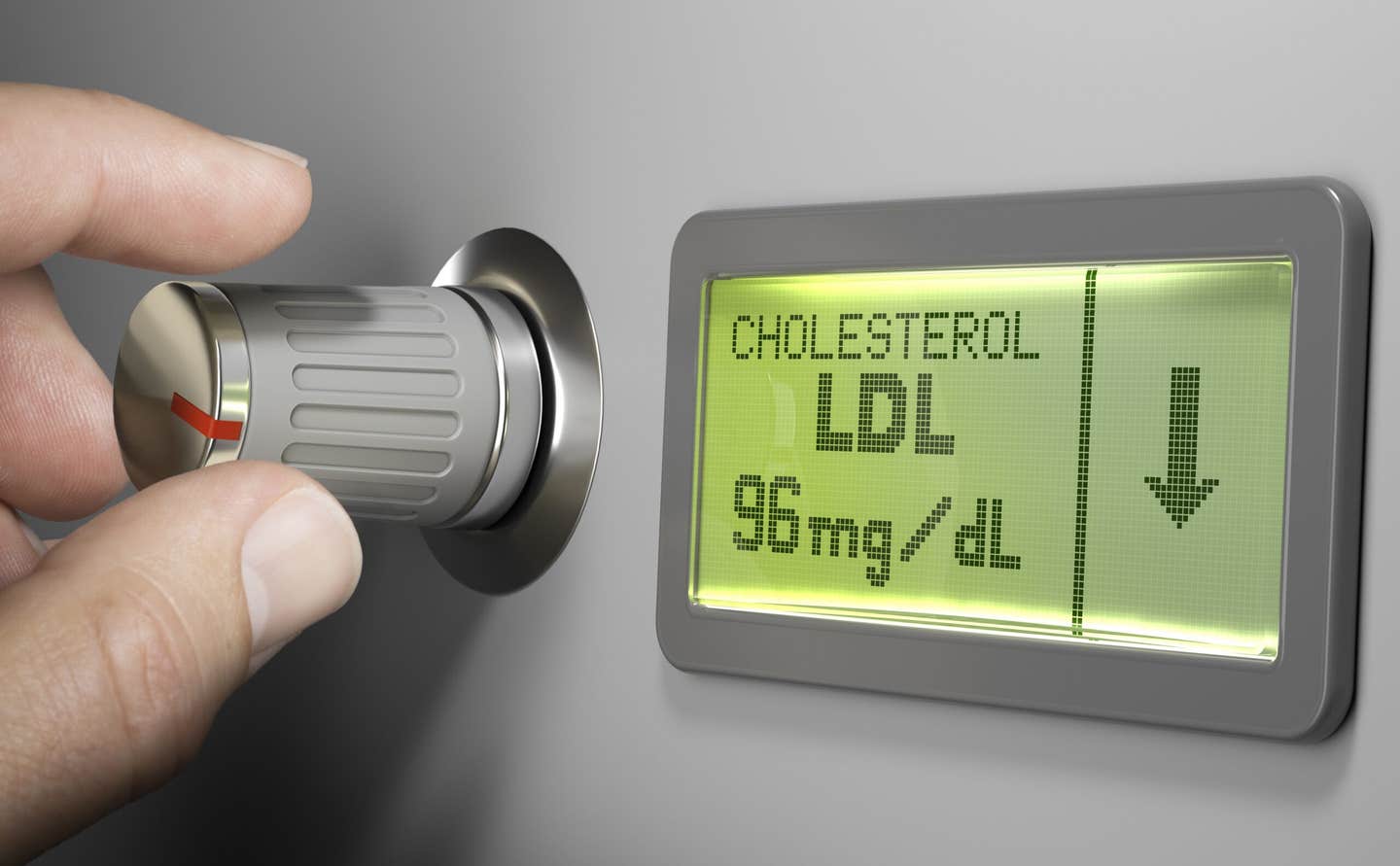Simple blood test can predict risk of severe liver disease years in advance
A new study shows a simple blood test can predict liver disease risk 10 years in advance, helping doctors act sooner.

A simple blood test may reveal your 10-year risk of liver disease. (CREDIT: Shutterstock)
Cirrhosis and liver cancer are two of the world's leading causes of illness and death, but they typically creep up quietly. Most people with liver disease are symptom-free until complications like internal bleeding, fluid buildup, or confusion from liver failure—abruptly send them to the hospital. By then, treatment possibilities narrow and chances for survival worsen. Doctors have long hoped for a simple way of detecting risk patients sooner, especially the obese and those with type 2 diabetes.
Researchers at Sweden’s Karolinska Institutet now say they may have one. Their new tool, called the CORE (Cirrhosis Outcome Risk Estimator) model, uses five factors—your age, sex, and three routine liver enzyme tests—to estimate the chance of developing serious liver problems within the next decade.
The study shows the method can flag risk with surprising accuracy and may change how primary care clinics look for early signs of liver disease.
How the model was created
The researchers analyzed data for more than 480,000 adults in Stockholm who had health checks between 1985 and 1996. None of the participants had liver disease, viral hepatitis, or a substance-related disorder at the beginning of the study. The scientists tracked these individuals for nearly 30 years using national health registers. About 1.5 percent of them subsequently developed cirrhosis, liver cancer, or needed a transplant.
The scientists attempted a wide range of normal blood tests—liver enzymes, cholesterol, glucose, and more—to see which best predicted outcomes. In the end, three enzymes alone—AST, ALT, and GGT—stood out as strong and consistent predictors of future disease. Combined with age and sex, they offered enough information to forecast who would go on to develop serious liver problems years later.
Primary care has not had the means of discovering the risk of late-stage liver disease in time," states Dr. Hannes Hagström, associate professor at Karolinska Institutet and senior consultant at Karolinska University Hospital. "Our model can predict the risk within 10 years and is based on three simple routine blood tests."


More accurate than current standard
Doctors do have another score, FIB-4, that they use to screen for advanced scarring of the liver. But FIB-4 was designed mainly for specialty clinics and doesn't perform well in the general population. In head-to-head comparisons, CORE performed much better.
When tested on the Swedish cohort, CORE predicted 10-year risk that was extremely close to what transpired. It correctly discriminated between people who developed cirrhosis or cancer and those who stayed healthy about 88 percent of the time. For comparison, FIB-4's accuracy was closer to 79 percent.
At common threshold levels—levels doctors use to decide who needs follow-up—CORE repeatedly detected more true cases with fewer false alarms. That balance is crucial, since too many false positives can clog clinics with unnecessary referrals, while missed cases put individuals in danger.
Tested outside Sweden
To see if the tool worked elsewhere, the researchers pitted CORE against health records of close to 450,000 UK Biobank participants and more than 24,000 Finnish adults. Again, the model held up. In the UK group, it was 79 percent accurate, compared to 73 percent for FIB-4. Results were similar in Finland.
Dr. Rickard Strandberg, affiliated researcher at Karolinska Institutet, called the consistency reassuring. "These are diseases that are increasingly common and that have a poor prognosis if they are delayed in being diagnosed," he said. "The model was able to predict risk in different countries, which suggests that the model can be used outside of Sweden."
A tool for day-to-day care
One of CORE's strongest points is simplicity. The three liver enzyme tests are already ordered on routine checkups, and all three can be run from one blood sample. A web-based calculator is now available where doctors and nurses can plug in values and receive an estimated risk percentage in return.
This is an important move towards the possibility of introducing early screening for liver disease in primary care," Hagström said. Drug therapies for those at high risk are also emerging, which makes early detection increasingly valuable, he said.
Compared to the cost of ordering multiple tests, CORE may also be cost-effective. In a large laboratory system in Europe, the set of tests needed for CORE was approximately half the cost of the package that was required for FIB-4. That difference could be significant for large screening programs, especially in countries with limited health budgets.
What patients should know
If CORE is utilized comprehensively, it would not replace a doctor's discretion. Instead, it could serve as a preliminary filter. A 10-year risk prediction above some threshold value could initiate follow-up tests, e.g., imaging, or referral to a liver specialist. If risk is low, it could translate to fewer unjustified procedures.
For patients, the takeaway is that routine blood work may reveal more than a single snapshot of liver health. When combined with age and sex, those common enzyme levels can paint a picture of the next decade. If your results show higher risk, there is still time to act—by improving metabolic health, limiting alcohol, or sticking with follow-up care—before serious problems arise.
Practical Implications of the Research
The CORE model could help primary care doctors diagnose liver disease years before symptoms develop. This means patients could be given lifestyle advice or interventions earlier, when changes can still prevent cirrhosis, cancer, or transplant.
For healthcare systems, the tool offers a way of targeting specialist care to those most in need, removing costs, and avoiding unnecessary referrals. Researchers say the next steps include testing CORE in high-risk groups like people with obesity or type 2 diabetes, and in non-European nations.
If confirmed, the model would be a standard part of health checkups worldwide, improving survival and lessening the rising burden of liver disease.
Research findings are available online in the journal The BMJ.
Related Stories
- New genetic discovery reveals hidden cause of liver disease
- Breakthrough treatment offers new hope in the fight against fatty liver disease
- Fatty liver disease doubles risk of death from several diseases
Like these kind of feel good stories? Get The Brighter Side of News' newsletter.
Joshua Shavit
Science & Technology Writer and Editor
Joshua Shavit is a Los Angeles-based science and technology writer with a passion for exploring the breakthroughs shaping the future. As a co-founder of The Brighter Side of News, he focuses on positive and transformative advancements in AI, technology, physics, engineering, robotics and space science. Joshua is currently working towards a Bachelor of Science in Business and Industrial Engineering at the University of California, Berkeley. He combines his academic background with a talent for storytelling, making complex scientific discoveries engaging and accessible. His work highlights the innovators behind the ideas, bringing readers closer to the people driving progress.



